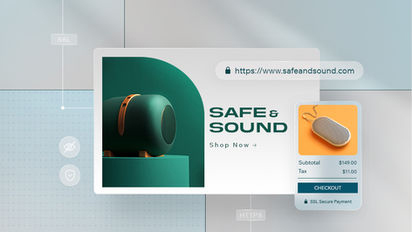Quick Text AI Guide
Text AI in 3 Steps
Text AI
In today’s digital age, the internet has become an integral part of our daily lives. With millions of websites available at our fingertips, it can be overwhelming to find new and interesting websites to explore. This is where a random website generator comes in handy.

A Beginner’s Guide to Text AI
Text AI
Web development can be broadly categorized into two main areas: front-end development and back-end development. Front-end development focuses on the visual aspects of a website, such as layout, design, and user interface. This involves using languages such as HTML, CSS, and JavaScript to create engaging and interactive user experiences. Back-end development, on the other hand, involves working with databases, servers, and application logic to ensure that a website functions properly. This often involves using languages such as PHP, Python, and Ruby.
One of the most important aspects of web development is responsive design. With the increasing use of mobile devices to access the internet, it is essential for websites to be optimized for all screen sizes. Responsive design ensures that a website looks and functions correctly on desktops, laptops, tablets, and smartphones. This involves using techniques such as fluid grids, flexible images, and media queries to create a seamless user experience across all devices.
In addition to responsive design, web developers also need to consider web accessibility when building websites. Web accessibility refers to the practice of making websites usable for people with disabilities, such as those who are visually impaired or have motor impairments. This involves using semantic HTML, providing alternative text for images, and ensuring that websites can be navigated using a keyboard. By making websites accessible to all users, web developers can ensure that everyone can access and use their websites.
When it comes to front-end development, one of the most popular frameworks is Bootstrap. Bootstrap is a front-end framework that allows developers to create responsive and mobile-friendly websites quickly and easily. It provides a set of pre-built components, such as buttons, forms, and navigation bars, that can be easily customized to fit the design of a website. Bootstrap also comes with a grid system that makes it easy to create responsive layouts that adapt to different screen sizes.
Another essential tool for front-end development is JavaScript, which is a programming language that allows developers to add interactivity and functionality to websites. JavaScript can be used to create animations, validate forms, and interact with APIs to fetch data dynamically. One of the most popular JavaScript libraries is jQuery, which simplifies common tasks such as DOM manipulation and event handling. More recently, frameworks like React and Angular have gained popularity for building dynamic and interactive web applications.
On the back-end side, one of the most widely used technologies is the LAMP stack, which stands for Linux, Apache, MySQL, and PHP. The LAMP stack is a popular open-source software stack that is often used to build dynamic websites and web applications. Linux is the operating system, Apache is the web server, MySQL is the database management system, and PHP is the server-side scripting language. Together, these technologies allow developers to create powerful and scalable web applications that can handle high traffic loads.
In recent years, there has been a shift towards using modern web development tools and technologies, such as Node.js and MongoDB. Node.js is a runtime environment that allows developers to write server-side code using JavaScript, making it easier to build real-time web applications. MongoDB is a NoSQL database that is designed for scalability and flexibility, making it ideal for handling large amounts of data in web applications. By using these modern technologies, web developers can create fast, efficient, and secure web applications that meet the demands of today’s users.
1. Start with a unique concept
When developing a new recipe, it is important to start with a unique concept that sets your dish apart from others. Consider combining unexpected flavors, using new cooking techniques, or incorporating unusual ingredients to create a recipe that will pique your readers’ interest. You can draw inspiration from different cuisines, culinary trends, or seasonal ingredients to come up with a concept that is both original and appealing.
2. Experiment with different ingredients and flavors
Building recipes is all about experimentation and creativity. Don’t be afraid to try out new ingredients and flavor combinations to create exciting and delicious dishes. Consider incorporating fresh herbs, spices, citrus zest, or other aromatic ingredients to enhance the flavors of your recipe. Experimenting with different cooking techniques, such as grilling, roasting, or braising, can also add complexity and depth to your dishes.
3. Consider dietary restrictions and preferences
When building recipes for your website, it is important to consider the dietary restrictions and preferences of your audience. Make sure to provide options for different dietary needs, such as vegetarian, gluten-free, dairy-free, or vegan recipes. Including nutritional information, such as calorie count, macronutrients, and allergen information, can also make your recipes more accessible and appealing to a wider audience.
4. Include detailed instructions and tips
When writing out your recipes, be sure to provide detailed instructions that are easy to follow. Include step-by-step directions, cooking times, and temperatures, as well as helpful tips and tricks to ensure success in the kitchen. Consider including photos or videos to visually demonstrate each step of the cooking process, making it easier for your readers to replicate your recipes at home.
5. Test your recipes
Before publishing a new recipe on your website, be sure to test it multiple times to ensure that it is accurate and delicious. Invite friends or family members to sample your dishes and provide feedback on the taste, texture, and presentation. Adjust the seasoning, cooking times, or ingredient ratios as needed to perfect your recipe before sharing it with your audience.
6. Engage with your audience
Building recipes on your website is not just about creating delicious dishes – it is also about engaging with your audience and building a community around your food blog. Encourage your readers to leave comments, ask questions, and share their own experiences with your recipes. Consider hosting cooking demonstrations, virtual cooking classes, or recipe contests to interact with your audience and showcase your culinary skills.

Text AI in 3 Steps
Text AI
In today’s digital age, having a visually appealing and user-friendly website is crucial for the success of any business. A well-designed website can help attract new customers, build credibility, and increase conversion rates. However, designing a website is not as simple as it may seem. It requires a strategic and systematic approach to ensure that the final product meets the needs and expectations of both the business and its target audience. In this article, we will discuss the website design process in detail, outlining the key steps involved in creating a successful website.
Step 1: Define the Purpose and Goals
The first step in the website design process is to clearly define the purpose and goals of the website. This involves identifying the target audience, understanding their needs and preferences, and determining the desired outcomes for the website. For example, is the website meant to generate leads, drive sales, provide information, or showcase products and services? By having a clear understanding of the purpose and goals of the website, you can better tailor the design and content to meet these objectives.
Step 2: Conduct Research
Once the purpose and goals of the website have been defined, the next step is to conduct research. This involves analyzing the competition, researching industry trends, and gathering insights into the preferences and behaviors of the target audience. By conducting thorough research, you can gain a better understanding of what works and what doesn’t in your industry, helping you make informed design decisions.
Step 3: Create a Wireframe
After conducting research, the next step in the website design process is to create a wireframe. A wireframe is a visual representation of the layout and structure of the website, showing the placement of various elements such as navigation menus, headers, footers, and content sections. Creating a wireframe allows you to plan the overall design and functionality of the website before moving on to the visual design phase.
Step 4: Design the Visual Elements
Once the wireframe has been finalized, the next step is to design the visual elements of the website. This involves creating a visually appealing and consistent design that reflects the brand identity and resonates with the target audience. Elements such as color scheme, typography, imagery, and layout are carefully considered to create a cohesive and attractive design that conveys the desired message and engages users.
Step 5: Develop the Website
After the visual design has been approved, the next step is to develop the website. This involves coding the design into a functioning website using HTML, CSS, and other programming languages. During the development phase, the website is tested for functionality, responsiveness, and compatibility across different devices and browsers to ensure a seamless user experience.
Step 6: Test and Optimize
Once the website has been developed, it is essential to test and optimize its performance. This involves conducting usability tests to identify any usability issues, testing load times to ensure fast page speeds, and optimizing the website for search engines to improve visibility and accessibility. By testing and optimizing the website, you can ensure that it meets the needs and expectations of users, leading to better engagement and conversions.
Step 7: Launch and Monitor
The final step in the website design process is to launch the website and monitor its performance. This involves deploying the website to a live server, promoting it to the target audience, and tracking key metrics such as traffic, engagement, and conversions. By monitoring the performance of the website, you can identify areas for improvement and make informed decisions to optimize its effectiveness over time.


